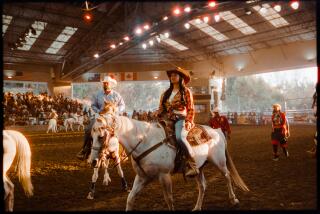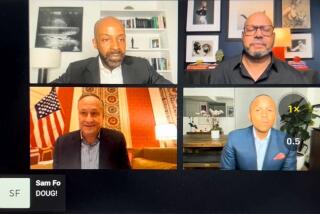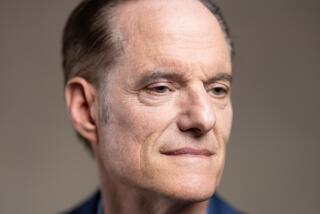AIDS Ride Fund-Raisers Shift Into High Gear in Third Year
- Share via
Dan Pallotta likes to tackle the seemingly impossible.
On this day in June, he is standing on a road in Philadelphia, cheering 1,901 riders as they head out on a 250-mile, three-day bicycle ride to Washington that will raise $4.5 million to benefit AIDS-related services.
The ride is Pallotta’s brainchild, and his passion.
“The rides have all been about doing something that seemed impossible,” says Pallotta, 35, the creator and producer of the American AIDS Rides. “This year, we have five rides going to nine cities and raising $23 million.”
Not bad, considering that, in 1993, the Harvard-educated Pallotta was employed doing nonprofit fund-raising to pay his own bills when he first came up with the concept.
“At first, all I could see were the negatives of the idea,” he explains. “But then I thought, ‘This will work, and people will want to do it. It’ll be amazing.’ ”
And amazing it is. This year’s five rides--Orlando to Miami, San Francisco to Los Angeles, Philadelphia to Washington, Minneapolis-St. Paul to Chicago, and Boston to New York--will involve 11,000 riders and thousands of volunteers and will directly benefit 28 AIDS-related service organizations across the country.
In its third year, the California AIDS Ride raised $8.2 million to make it the nation’s highest-grossing AIDS fund-raiser ever.
For the Philadelphia-Washington cyclists, once each had raised $1,400 in donations and spent months training for the challenging ride, the rest was left up to the ride organizers.
The ride is one huge traveling roadshow in which luggage, tents, hot food, cold drinks, showers, toilets, medical and technical support facilities--even masseuses--are transported from start to campsite to campsite to finish in a tractor-trailer brigade.
All the cyclists need to do is ride. And ride. And ride.
Up hills and through cornfields, from Pennsylvania to Maryland to Washington, the riders are bound together by the challenge of the course, and their commitment to the cause.
Most know a loved one either sick or dying from AIDS, and some are sick themselves.
“I’ve been HIV-positive for 10 years, and I’ve been blessed with being healthy,” rider Paul Garrard says. “For me, it’s another way to tell HIV to take a hike for another day.”
From her front porch, 50-year-old Martha Rill watches as rider after rider pedals into pit stop No. 3 for lunch in an athletic field across the street from her Hampstead, Md., home. The area is set up, used by nearly 2,000 riders and volunteers, and cleaned up in a matter of hours.
“The organization of this is incredible,” Rill exclaims. “I’ve lived in this town all my life and you can’t hardly get two people to work together on anything. The cooperation, the friendliness of these people, it’s amazing.”
All along the route, people pitch in to help the riders. Children stand along the road to high-five cyclists as they pass. Residents run their garden hoses to the street to provide a roadside shower, as others hand out cups of water to help riders weather the blistering heat and humidity. Two children positioned at the top of a steep piece of roadway in Darlington, Md., even ask tired riders for their autographs.
In Washington, a band complete with twirlers takes over a street corner and plays, “When the Saints Come Marching In” as the riders hit the home stretch. Spectators wave flags and cheer loudly. And some people call the riders “heroes.”
When Pallotta looks out at the faces of the exhausted and elated riders, he sees much more than just another AIDS Ride. He looks into the future.
“I want to see an end to the AIDS epidemic,” he says. “And I want to see it done in five years.”
That might sound a bit optimistic, but we’re talking about a man who has already raised $27.8 million since the first ride took off in 1994.
Pallotta looks to another optimist for his inspiration.
“In 1963, John F. Kennedy said he wanted to see a man on the moon by the end of the decade,” Pallotta says. “He had no right to say that, but six years later, I watched on TV as it happened.
“So we can do this,” he continues. “If we give people projects and a vision, we can do this.”
For Pallotta, the end of the AIDS epidemic isn’t about dreaming. It’s about taking action.
“When I look out at the riders, I don’t see hope,” he says. “What I do see is 11,000 riders riding 1,800 miles and raising $23 million in cold, hard cash.”
“We need to do, more than we need to hope.”
More to Read
Sign up for The Wild
We’ll help you find the best places to hike, bike and run, as well as the perfect silent spots for meditation and yoga.
You may occasionally receive promotional content from the Los Angeles Times.






